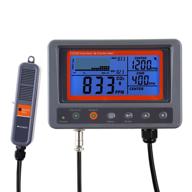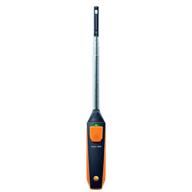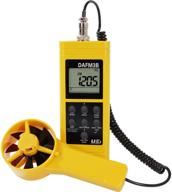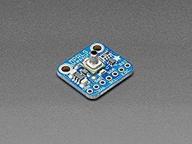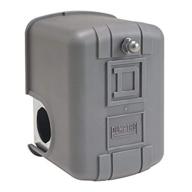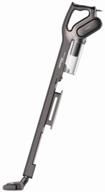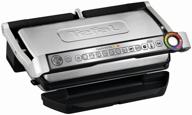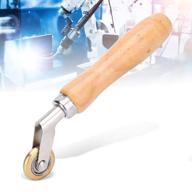Another interesting products
Troubleshooting Pressure System Issues
Pressure instrumentation such as gauges, sensors, and transmitters are crucial for monitoring and controlling processes in many industrial applications. However, these devices can malfunction or drift out of calibration over time leading to inaccurate readings and potential safety risks or production problems. By following proper maintenance procedures and being able to recognize common issues, operators can quickly troubleshoot problems.
Common Pressure Instrument Problems
- Plugged impulse lines - Buildup in lines blocks pressure from reaching gauge diaphragms
- Leaking impulse lines - Allows air to enter lines producing incorrect readings
- Failed sensor diaphragms - Causes complete failure or calibration shifts
- Low transmitter battery - Results in erratic, jumping, or no readings
- Corroded electrical connections - Intermittently breaks sensor circuits
Preventive Maintenance
Performing routine maintenance helps minimize instrument issues and failures:
- Check impulse lines for kinks, leaks, blockages. Replace damaged lines.
- Examine sensor diaphragms for rupture, corrosion. Replace damaged diaphragms.
- Verify electrical terminations are tight. Replace corroded connections.
- Install surge protection on transmitters. Replace transmitter batteries.
- Calibrate according to manufacturer specifications. Perform bump tests.
Calibration Best Practices
Proper calibration at prescribed intervals verifies accuracy and allows adjustments to be made if readings drift. This requires following procedures:
- Use appropriate calibration equipment for device range and precision.
- Select calibrated reference standards traceable to NIST.
- Restore normal process conditions before calibrating.
- Document calibration date, reference standard used, and as-found/as-left readings.
- Make calibration adjustments only within manufacturer limits.
| Issue | Possible Causes | Troubleshooting Tips |
|---|---|---|
| Inaccurate or unstable readings |
|
|
| No reading/display |
|
|
By performing preventive maintenance and following a structured troubleshooting approach, pressure instrument problems can be corrected before leading to larger failures.
Common Problems with Pressure Sensors, Gauges, and Transmitters
Pressure instrumentation is susceptible to multiple failure modes that can impact measurement accuracy and lead to process disruptions. Being aware of typical issues can help maintenance teams quickly diagnose and resolve problems.
Pressure Sensor Failures
The sensor contains the critical sensing element that converts pressure into an electrical signal. Some common sensor failures include:
- Ruptured diaphragm - Causes measurement inaccuracy and fluid ingress into sensor body.
- Plugged reference tube - Isolates sensor from process pressure source.
- Drifted sensor - Shifts calibration due to diaphragm fatigue or electronics degradation.
Pressure Gauge Failures
Bourdon tube gauges are particularly prone to certain types of mechanical failures:
- Sticking pointer - Prevents pointer from moving smoothly with pressure changes.
- Leaking case - Allows process fluids to enter gauge interior.
- Clogged tubing - Blocks pressure transmission to gauge internals.
Transmitter Issues
As the interface between sensor and control system, transmitters can experience these problems:
- Loose wiring - Causes intermittent signal dropout.
- Low power - Battery operated types may have reduced battery life.
- Calibration drift - Shifts output accuracy out of tolerance.
Top products in 🌀 Pressure & Vacuum
Identifying Failures
Warning signs of pressure instrument failures include:
- Inaccurate or jumpy readings
- Complete signal loss or wild fluctuations
- Leakage from sensor, gauge or transmitter housing
- Visible damage to pressure-sensing elements
Process data logs and diagnostics can reveal measurement deviations indicating drift or malfunction. When issues are suspected, inspection, troubleshooting, and calibration checks will help isolate the root cause.
Preventing Problems
Regular maintenance and testing can minimize pressure instrument failures by catching problems early:
- Follow manufacturer calibration schedule
- Perform leak tests on impulse tubing
- Check wiring integrity and power supply health
- Log and trend measurement data to catch deviations
Properly installing instruments according to codes and specifications will also improve reliability and service life.
Similar products
Maintenance Tips to Prevent Pressure Instrument Failure
Without proper maintenance, pressure gauges, transmitters, switches, and other instrumentation are prone to failure from damage, wear, or calibration shifts. Implementing a comprehensive maintenance program is essential to preventing unnecessary failures.
Daily Maintenance
- Check for leaks in impulse tubing connections and along tubing. Tighten fittings or replace tubing as needed.
- Inspect gauge glass and sensor diaphragms for signs of damage or fluid ingress. Replace immediately if compromised.
- Verify transmitter wiring intact with no loose connections.
- Check gauge pressure reading against a known calibrated reference for gross inaccuracies.
Routine Maintenance
- Test pressure alarms, trips, and interlocks for proper activation and shutdown response.
- Clean any filters/strainers protecting instrumentation from dirt or debris.
- Lubricate gauge internals and mechanisms per manufacturer specifications.
- Inspect transmitter wiring for deterioration. Replace any compromised cables.
Periodic Maintenance
- Perform a span calibration on transmitters and switches against a traceable standard.
- Conduct pressure leak decay testing on the instrument and impulse tubing system.
- Check pressure gauge accuracy across the scale with a calibrated reference gauge.
- Renew desiccant packs in transmitter housings to maintain moisture protection.
Overhaul Maintenance
- Complete disassembly, cleaning, inspection and replacement of worn parts for pressure gauges.
- Pressure test gauge housing integrity. Ensure proper reassembly.
- Replace critical sensor diaphragms and other elastomeric seals.
- Update electronics, firmware, and communications on transmitters.
Documentation
Proper documentation of all maintenance activities provides a record for compliance and helps evaluate frequency needs:
- Record date, technician, and details for each maintenance task.
- Note any out-of-tolerance calibration results or part replacements.
- Document next scheduled maintenance based on intervals.
Implementing the appropriate schedule of daily verification, routine maintenance, periodic calibration, and overhaul will maximize up-time and minimize failures of pressure instrumentation.
Calibration Best Practices for Pressure Instruments
Regular calibration of pressure gauges, sensors, transmitters, and switches is vital to ensuring accurate measurements. Following proper calibration techniques and standards helps maintain data integrity.
Calibration Frequency
Establish a routine calibration schedule based on manufacturer recommendations, process conditions, and site policies. More frequent calibration is required for:
- Dirty or corrosive service conditions
- Extreme temperature swings
- Applications with narrow tolerance requirements
- Regulated processes demanding rigorous documentation
Calibration Methods
Common calibration techniques include:
- Deadweight tester - Applies precise pressures via weight loaded piston
- Pressure comparator - Uses master and working gauges for comparison
- Pressure controller - PC-controlled automated calibration system
Procedure
- Select an appropriate calibration standard for the device range and accuracy.
- Connect the calibration standard and device properly.
- Apply pressures in increments across the device's range.
- Record results for as-found and as-left readings.
- Make any necessary zero, span, or linearity adjustments.
Traceability
Calibrate equipment against standards certified as traceable to national/international standards like NIST. This provides an accuracy chain.
Documentation
Document details for each calibration including:
- Date, technician, and equipment IDs
- Reference standard and traceability info
- Specific pressures and readings
- Any adjustments made
- Due date for next calibration
Best Practices
- Follow manufacturer procedures for set-up, adjustments, and limits.
- Ensure normal process conditions for calibration environment.
- Allow adequate instrument warm-up and settling times.
- Use dedicated calibration instruments to avoid cross-contamination.
Proper calibration technique, traceability, documentation, and care of instruments ensures the highest accuracy and reliability.
Choosing the Right Vacuum Pump
Selecting the optimal vacuum pump for an application requires understanding the operating requirements and matching them to the capabilities of different pump technologies.
Pump Types
Major vacuum pump categories include:
- Rotary vane - Vanes rotate inside eccentric rotor to create suction
- Piston - Reciprocating action draws in gas and compresses it
- Diaphragm - Flexible diaphragms pull gas in and out
- Scroll - Orbiting scrolls compress gas into smaller pockets
- Turbomolecular - High speed turbine blades impart momentum to gas molecules
Key Factors
Consider the following when selecting a vacuum pump:
- Ultimate vacuum level - Limiting pressure range of pump technology
- Pumping speed - Volume flow rate at given pressure
- Contamination tolerance - Ability to handle water vapor, particulates, etc.
- Operating life - Bearings, seals and other wear components
- Maintenance needs - Oil changes, seal replacement, overhauls
Application Matching
| Application | Suitable Pump Types |
|---|---|
| Rough vacuum for load locking | Rotary vane, piston |
| High vacuum coating processes | Turbomolecular, cryogenic |
| Analytical instrumentation | Scroll, diaphragm, ion |
| HVAC systems | Rotary vane, piston |
Critical Considerations
- Evaluate required pump-down time
- Consider future system expansion needs
- Review facility utility capabilities
- Analyze environmental conditions
- Research maintenance agreements and lifecycle cost
Carefully weighing vacuum requirements against pump capabilities ensures the best long-term solution at the lowest total cost of ownership.
How Amazon Prime Benefits Pressure & Vacuum Buyers
For operations relying on pressure and vacuum instrumentation, having a steady supply of spare parts, consumables, and new equipment is essential. Amazon Prime can provide significant benefits for regular buyers in the pressure and vacuum industry.
Fast Shipping
Amazon Prime offers free two-day shipping on millions of eligible items. For time-sensitive needs or last minute purchases, paying expedited shipping fees can be costly. With Prime, fast delivery is standard.
Free Returns
Ordering the wrong pressure gauge or vacuum pump can happen occasionally. Prime members get free return shipping if the return is within 30 days. This makes it easy to exchange items for something more suitable.
Purchase Approvals
Navigating purchase approvals can cause shipment delays. With Prime, buyers can get orders delivered fast while back-end payment details are resolved.
Price Comparisons
It helps to cross-reference prices from different vendors when buying pressure and vacuum products. Prime members can quickly price check without paying multiple shipping fees.
Availability Notifications
When a needed part is out-of-stock, Prime members can opt-in for alerts when the item is available again. This is useful for pressure accessories or vacuum components that may have limited supply.
Lightning Deals
Amazon's Lightning Deals provide limited time discounts on select products. Prime members get 30 minute early access to take advantage of Lightning Deal pricing on pressure and vacuum equipment.
The combination of fast shipping, returns, notifications, and exclusive access makes Amazon Prime a valuable tool for frequent buyers of pressure and vacuum instrumentation and components.
Considering how much pressure/vacuum downtime costs per hour, Prime practically pays for itself by getting critical parts delivered quickly when needed.
Best Suction Vacuum For Carpet
When it comes to finding the best suction vacuum for carpets, there are several options available in the market. Here are some of the best vacuums for carpets based on expert reviews and tests:
These vacuums have powerful suction and are designed to effectively pick up debris from carpets. The SEBO Airbelt D4 Canister Vacuum is the best vacuum for carpets according to RTINGS.com, while the Shark Vertex DuoClean PowerFins Cordless Stick Vacuum is the top pick of The Spruce. The Miele Complete C3 Canister Vacuum is also a great option for carpets, as it has a powerful motor and adjustable suction force. The Dyson Cyclone V10 Animal Vacuum is another popular choice, especially for pet owners. The Bissell CleanView Swivel Rewind Pet Reach Vacuum is recommended by cleaning expert Sarah McAllister for its specialized roller head that can loosen, lift, and suck up deeply embedded debris from carpets. Finally, the Eureka Mighty Mite Canister Vacuum is a budget-friendly option that still has good suction power.
Most Powerful Vacuum Cleaner
According to various expert reviews and tests, the most powerful vacuum cleaner is the Miele Complete C3 Canister Vacuum. It has a powerful 1200W motor that can deal with stubborn messes or debris stuck in cracks. It also delivers fantastic performance on bare floors and does a great job dealing with debris on carpets. Its seven-level power adjustment function lets you adjust its suction force to clean everything from window curtains to high-pile carpet with a few button presses. Other powerful vacuum cleaners include the Dyson V15 Detect Cordless Vacuum, the Shark Vertex DuoClean PowerFins Cordless Stick Vacuum, the Dyson Gen5detect Cordless Vacuum Cleaner, and the Miele Triflex HX2 Pro.
What Is The Best Suction Power For A Vacuum Cleaner?
When it comes to determining the best suction power for a vacuum cleaner, there are several factors to consider. Here are some insights from various sources:






